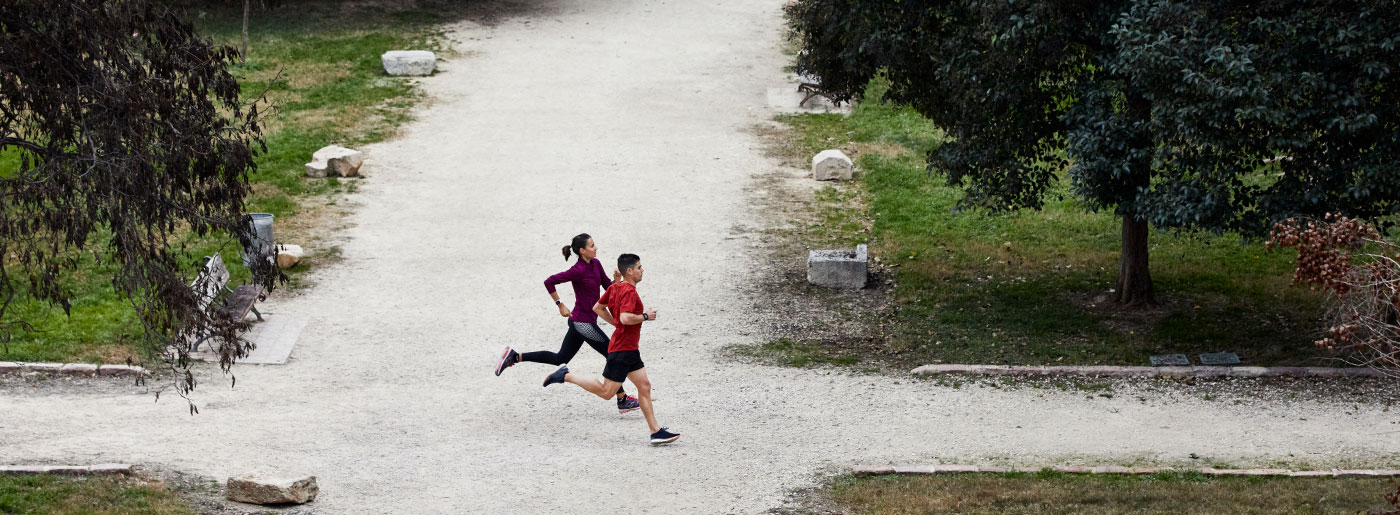At face value, running seems like a simple, straightforward sport — you train, eat well, and race. While true on a surface level, once you’re in the thick of a training plan, its complexities begin to present themselves.
We can go on and on about honing performance and which metrics to keep track of, but it’s important to remember that reaching your running goals isn’t just about being fast. Running at your best requires a strong mindset to compliment your physical prowess.
Nobody knows this better than professional triathlete and Polar athlete Tim Don. He’s won some of the sport’s biggest races and set a World Record with the fastest IRONMAN ever recorded (IRONMAN South American Championship 2017, 7:40:23).
Don would be the first to tell you, there are four essential mental aspects to being a successful runner (or any athlete in general) — dreams, goals, motivation, and achievement.
Here, we take a closer look at each of these four components, and how when combined together, they can help you follow through on your running goals.
Dreams
Athletes at any level know how powerful dreams can be. It’s what gets somebody off the couch and across the finish line of their local 5K, or an age-group runner who finally punched their ticket to the Boston Marathon.
“For me, dreams mean many things right now. As a professional triathlete, it’s achieving my aim, it’s performing to the best of my abilities, really trying to push myself and you dream about crossing the tape knowing you emptied everything out,” says Don.
But also with my family, I dream of my children being happy, getting into an active lifestyle, and really embracing life, giving 100 percent.
Don first dreamed about doing an IRONMAN back in 1997 when he first became a professional triathlete. For him, visualizing the conditions in Kona helped foster a drive to race on the world’s biggest stage. It’s important to keep things in perspective though — the bigger you dream, the harder you have to (or get to) work. And rarely is this accomplished by yourself.
“You have to have a plan, you have to execute your plan and have a good team around you — people who support you and have knowledge and skillsets that are going to help you accomplish your dreams,” says Don. “To experience your dream in reality with family and friends and those who share the journey, that’s what it’s all about.”
What’s Don’s next big dream? Win Kona, of course.
Running Goals
Most big achievements start as a dream and are then dissected and broken down into smaller, more attainable goals. Reaching your dream will be a journey full of ups and downs, but measuring your successes and failures through personal goals is a healthy way to track progress.
“It’s those small goals that you can focus on, and it could be a daily goal, a weekly goal, a monthly goal,” says Don. “And for me, I like to be practical, so I like to look at my training for my week, I break it down for two or three days, that’s my goal, and that’s as important as the end goal because I know to get there I have to go through this process.”
Goals can come in all shapes and sizes, but some specific running goals can surround fitness, strength, resilience, or mental stamina. Each goal needs some context, and there’s a fine balance between striving for something out of reach and something more attainable.
If you hit a goal, reward yourself and enjoy the moment. If you fail, learn from your mistakes and try again.
“With my smaller goals, if I have a good week of training, I have a nice glass of wine on the weekend […] or crack open a new pair of goggles,” says Don. “In the grand scheme of things, they’re not that big, but in that moment, you’ve earned it, you’ve achieved it.”
Motivation
Whether it’s work, relationships, or training, everyone struggles with motivation from time to time. It’s only natural — things outside of your control can sap energy and inject stress into your life, to the point where that post-work track session no longer sounds appealing.
Having a source of motivation to lean on during tough times can help keep your training and fitness on track.
For Don, his motivation is a combination of providing for his family, and the joy of being able to train and race after knowing what it’s like to be sidelined with an injury. His positive outlook (I’m able to do this, I don’t have to do this), combined with his drive to be at his best on race day knowing he trained to the best of his ability, keeps him motivated and engaged on a daily basis.
“There are always going to be times when it’s hard to get out of bed and commit to a session, to do the extra 45-minute bike ride you need to do, and for me, those are the sessions that count,” Don says. “It’s hard at times, but if you can find a small spark of something to get you out the door, you’d be amazed at what the body can do.”
Achievement
Obviously, there’s a lot more to achieving a running goal than simply showing up on race day and toeing the line.
There are hours of training, preparing both mentally and physically, as well time spent researching the course and your competitors. This well-rounded approach gives you the best shot at achieving what you set out to do in the first place. Visualization helps — control what you can control and don’t worry about anyone else but yourself.
“Crossing the line, that’s what it’s about. Whether you have to sprint to the very last inch or you can enjoy the last 100 meters, there’s something fulfilling about crossing the line knowing I’ve left everything out there and given it absolutely everything I could,” says Don.
Once you’ve achieved your goal, enjoy the moment. Not soon after you’ll be reassessing and starting to look for what’s next, whether it’s a repeat performance or going faster or longer.
If you liked this post, don’t forget to share so that others can find it, too.
Or give it a thumbs up!
I like this article
Please note that the information provided in the Polar Blog articles cannot replace individual advice from health professionals. Please consult your physician before starting a new fitness program.






